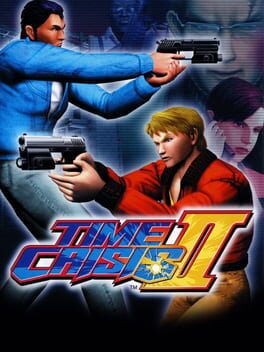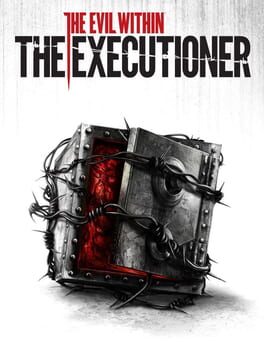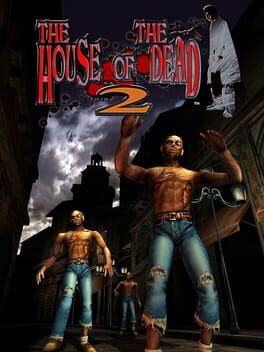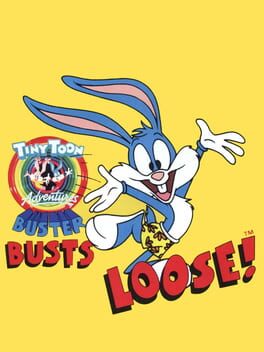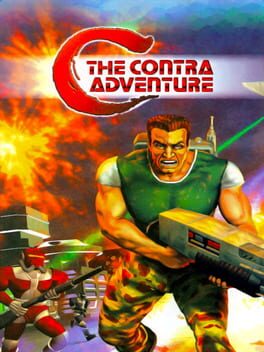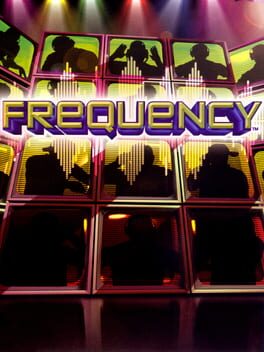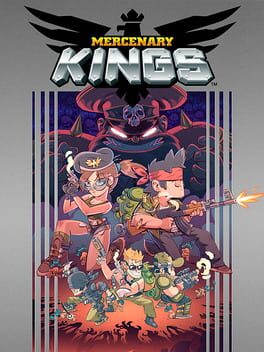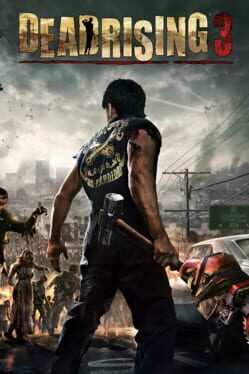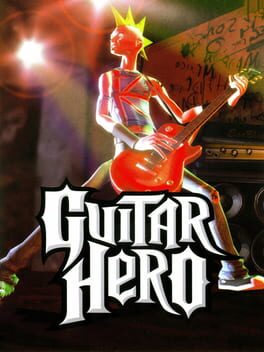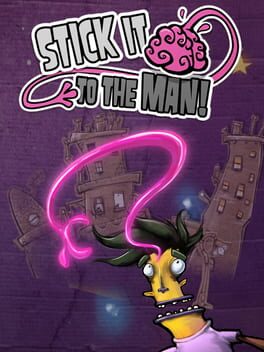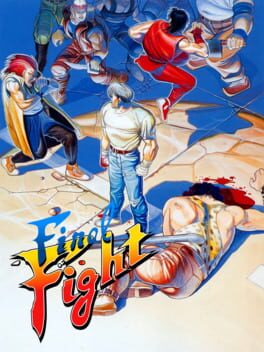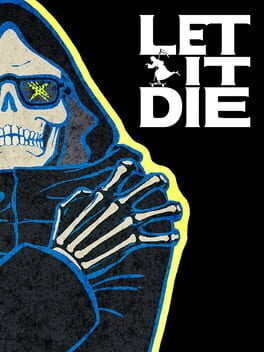1997
Twice the action, twice the guns, twice the arcade cabinet size, and TWICE THE PLAYERS! Time Crisis II might be one of the most literal translations when Namco gave this crew the objective "make the second Time Crisis game" as it evolved its gameplay and expanded the horizon in order to make the game big enough for two players (I bet selling those gigantic cabinets to arcades and movie theaters gave Namco a nice chunk of change too).
There's something I inherently adore about the "lone wolf" setting the original Time Crisis had, something the mainline games would never return to. So I can't help but love the original game just a tad bit more. Still, this game is awesome and feels a bit more fair with how they design the enemy attacks, giving you a decent warning to react in order to avoid getting hurt! Time Crisis II is an appropriate step-up from the original experience in the ways that really matter the most.
There's something I inherently adore about the "lone wolf" setting the original Time Crisis had, something the mainline games would never return to. So I can't help but love the original game just a tad bit more. Still, this game is awesome and feels a bit more fair with how they design the enemy attacks, giving you a decent warning to react in order to avoid getting hurt! Time Crisis II is an appropriate step-up from the original experience in the ways that really matter the most.
This was an okay game to play through with friends on discord whilst staving cabin fever during the early stages of the pandemic. However, even for its small scale, it just feels unimaginative and unoriginal for the most part. I appreciate the concept a lot, it's why my friends and I wanted to play it!
There's a couple scares that are fun, but overall it's just kind of boring. I feel the game doesn't take enough advantage of the atmosphere provided, most especially the living space of the main character that can be particularly scary. The character models look like absolute shit, but I get not wanting to just use pre-existing models from an Unreal store or whatever.
Also, as someone that stayed in Japan for about a month and lived off the numerous Family Marts and such, this looks NOTHING like a Japanese convenience store. The design and shelves look particularly American.
There's a couple scares that are fun, but overall it's just kind of boring. I feel the game doesn't take enough advantage of the atmosphere provided, most especially the living space of the main character that can be particularly scary. The character models look like absolute shit, but I get not wanting to just use pre-existing models from an Unreal store or whatever.
Also, as someone that stayed in Japan for about a month and lived off the numerous Family Marts and such, this looks NOTHING like a Japanese convenience store. The design and shelves look particularly American.
A goofy sidepiece that feels like it would've been part of the complete package, were it for not being part of the 8th generation of consoles and not the 5th or 6th. The Executioner scenario has a bit of intrigue, but it mostly just plays with an already established world in order to scream and spill blood. Playing as box head is fun to a degree, but gets a bit monotonous, especially having to see the same animations, gratifying as they are . . . you know, the first couple times. He really should have like 5 or 6 more just so it doesn't get so old so quickly.
Barely any story lore to speak of, it's hard to even consider it canonical, but I suppose one can see it as the STEM corporation taking volunteers at a low point in life, trying to find a means of escape, much like Ruvik was . . . I guess.
The extra scenario of having to fight a very capable Sebastian was also pretty funny. In the end, I will always encourage goofy, bonus content like this, and still appreciate what they were going for . . . the final boss fucking sucks ass, though.
Barely any story lore to speak of, it's hard to even consider it canonical, but I suppose one can see it as the STEM corporation taking volunteers at a low point in life, trying to find a means of escape, much like Ruvik was . . . I guess.
The extra scenario of having to fight a very capable Sebastian was also pretty funny. In the end, I will always encourage goofy, bonus content like this, and still appreciate what they were going for . . . the final boss fucking sucks ass, though.
A great successor that expanded on concepts and presentation while doing some globetrotting! The House Of the Dead 2 is likely the most popular entry in the series, and that's for good reason! It's fun, fast-paced, and is teeming with a fun art style and sound design, it's always a blast to play! While SEGA was having trouble in the console department, their output in the arcade scene showed no signs of slowing down!
Of course, I can't forget that the goofy voice-acting helped make this a memorable experience as well. It's hard to say if it was lack of direction or something else, but there's mysterious sense of endearment coming from it. It almost alleviates the dreary and gory zombie-slaying experience to make it more charming and funny.
I can't wait for this to also get a garbage-ass remake.
Of course, I can't forget that the goofy voice-acting helped make this a memorable experience as well. It's hard to say if it was lack of direction or something else, but there's mysterious sense of endearment coming from it. It almost alleviates the dreary and gory zombie-slaying experience to make it more charming and funny.
I can't wait for this to also get a garbage-ass remake.
2011
A reasonably good game, considering the sporadic quality regarding games based on pre-existing IPs back then. Buster Busts Loose is a really neat platformer that tried to ride the line of speed and careful control.
Something that holds it back, in my opinion--and something the devs couldn't help--is the fact that it's not in widescreen. Unlike Sonic, the design makes way for points where you can't react quickly enough to what's coming, so the game feels unfair more often than the more well-known blue blur of the gamingsphere.
Regardless, it feels pretty good to play and satisying to see they kind of gave a shit when it came to providing a challenging game for Tiny Toons fans. I also like how a decent chunk of the game is locked out if you choose Easy difficulty.
Something that holds it back, in my opinion--and something the devs couldn't help--is the fact that it's not in widescreen. Unlike Sonic, the design makes way for points where you can't react quickly enough to what's coming, so the game feels unfair more often than the more well-known blue blur of the gamingsphere.
Regardless, it feels pretty good to play and satisying to see they kind of gave a shit when it came to providing a challenging game for Tiny Toons fans. I also like how a decent chunk of the game is locked out if you choose Easy difficulty.
Slightly better than their last attempt, but still considerably poor. C: the Contra Adventure at least has the courtesy of baring 2D side-scrolling stages, but it's still an ugly mess that feels like crap to play. The original Playstation was a very dark time for Contra, which is sad since other side-scrolling action games were flourishing at the time, most especially the Metal Slug series.
2001
The Prometheus to Harmonix's future endeavors, Frequency is a great idea for a rhythm game, but implemented in a presentation so hideously garish and obtuse, you would think space aliens designed the graphics and visuals.
Frequency came from a place where Harmonix got an opportunity to work with Sony in order to provide unique, rhythmic action in a way that emulated the style of reading music sheets, while not needing the wherewithal in order to play these raving tracks for high scores! A predecessor of what's the come.
It's a very humble game with a humbling soundtrack (mostly licensed from other artists, but no huge names besides No Doubt). The sequel would flesh out the concept in a way that wasn't just more enjoyable, it also didn't look like visual nonsense.
Frequency came from a place where Harmonix got an opportunity to work with Sony in order to provide unique, rhythmic action in a way that emulated the style of reading music sheets, while not needing the wherewithal in order to play these raving tracks for high scores! A predecessor of what's the come.
It's a very humble game with a humbling soundtrack (mostly licensed from other artists, but no huge names besides No Doubt). The sequel would flesh out the concept in a way that wasn't just more enjoyable, it also didn't look like visual nonsense.
2014
Few things were more baffling to me than the hype this game managed to garner, despite looking like a boring collect-a-thon with slow gameplay and tedious enemies to shoot from the very beginning. From what I recall, people were convinced this was going to be some Metal Slug successor because of the art style, and they didn't pay attention when the devs involved cited SPECIFICALLY the Metal Slug games on Neo Geo Pocket, which were less run-n-gun and had more emphasis on exploring.
Regardless, this game is worse than those. It doesn't help that I really don't like Paul Robertson's art, which I find the be nothing if not obnoxious. The game functions perfectly fine, but I still have a hard time thinking of anything remotely enjoyable about this. From what I see, though, that initial hype was long forgotten and a lot of folks see it for the mostly-miserable experience that it truly is.
Shit sucks lol
Regardless, this game is worse than those. It doesn't help that I really don't like Paul Robertson's art, which I find the be nothing if not obnoxious. The game functions perfectly fine, but I still have a hard time thinking of anything remotely enjoyable about this. From what I see, though, that initial hype was long forgotten and a lot of folks see it for the mostly-miserable experience that it truly is.
Shit sucks lol
This is literally just Dead Rising 3 rereleased on Windows PC with 'most' of the DLC and stripped of the Xbox phone app junk. The only reason this gets a slightly higher score than the original release is due to the value of modding. Even the most basic ones make a world of difference. I suggest the very easy .txt edit that removes the pesky 30 fps cap, making all the animation look buttery-smooth. I can also recommend the camera mod that replicates Dead Rising 1's camera angle.
These two alone make a huge difference in how much more appealing the game looks. Please, if you happen to own the game on Steam, do yourself a favor and slap these mods on.
These two alone make a huge difference in how much more appealing the game looks. Please, if you happen to own the game on Steam, do yourself a favor and slap these mods on.
2005
A great rhythm game that, for better or for worse, changed that genre's path forever. Guitar Hero is a really cute and charming little piece that is great to look back at, especially after seeing how bloated and ridiculous it became a mere few years later. The song covers are definitely rough, but it all works for this fun game about hitting multi-colored buttons on a stick.
Say what you want about this franchise and the parties involved, but Guitar Hero itself has this dirty little soul that I love to see.
Say what you want about this franchise and the parties involved, but Guitar Hero itself has this dirty little soul that I love to see.
2013
A kooky game with an endearing art style, especially for those that appreciate that gross 90s feel that was pretty common during that generation. Stick It to the Man has a fun little story to tell full of charming characters in what I can only assume was an allegory for empathy in society.
Even if it wasn't, I laughed a lot!
Even if it wasn't, I laughed a lot!
2003
The successor to Frequency, which saw many improvements. Including a visual style that isn't senseless, more popular songs (likely from Sony's publishing power), and a more refined design that more heavily promoted perfect runs and chains. Granted, the latter was still exceedingly tough on higher difficulties.
There isn't much to speak of outside of this, as there's no real narrative. My one complaint is that the lanes get a little too "hill-y" and make it more difficult to see the oncoming notes. Regardless, this was still a solid rhythm game with a unique design, and something that would creep up in Harmonix's career from time-to-time while in the midst of their Rock Band craze.
There isn't much to speak of outside of this, as there's no real narrative. My one complaint is that the lanes get a little too "hill-y" and make it more difficult to see the oncoming notes. Regardless, this was still a solid rhythm game with a unique design, and something that would creep up in Harmonix's career from time-to-time while in the midst of their Rock Band craze.
1989
2016
I sunk a ridiculous amount of hours into this game. I made an analysis video on the experience. I made this game part of my morning routine for at least two years. And finally putting it down for good (probably), all I can do is look at the screen in 2022 and say "shit."
Let It Die is pretty cool . . . for a f2p game. It doesn't really bare any pay2win mechanics, as it asks for your time, rather than your money. The mountain of grinding this game demands is gigantic, and that's just in regards to clearing the first 40 floors that is the original campaign (which I've done on a fresh save twice). Never-mind the floors above 40 which only ramp up its difficulty.
However, the game is undeniably tedious and monotonous. Enemy variety is very low, as most equate to merely being bots with equipment you can also get yourself. And the difficulty spikes get very annoying past the 12th or so floor. It's a frustrating game that I won't argue in its defense whenever folks decide they don't want to put in the time to clear the main campaign. I can't ignore its highlights though, such as the unique soundtrack and charming atmosphere full of personality. The host, Uncle Death, is a pretty fun character as well.
There's probably a conversation to be had about this kind of game being put in a $60 product. For a simple style of traversing and combat, it would certainly had to have done a lot more with its core design to be a full-priced game, but with so many games doing what this game already does, I'm not sure if that would be worth it.
With its sequel "Deathverse" approaching soon, I think it's the best time to put down this game and look forward to the new experience instead.
Let It Die is pretty cool . . . for a f2p game. It doesn't really bare any pay2win mechanics, as it asks for your time, rather than your money. The mountain of grinding this game demands is gigantic, and that's just in regards to clearing the first 40 floors that is the original campaign (which I've done on a fresh save twice). Never-mind the floors above 40 which only ramp up its difficulty.
However, the game is undeniably tedious and monotonous. Enemy variety is very low, as most equate to merely being bots with equipment you can also get yourself. And the difficulty spikes get very annoying past the 12th or so floor. It's a frustrating game that I won't argue in its defense whenever folks decide they don't want to put in the time to clear the main campaign. I can't ignore its highlights though, such as the unique soundtrack and charming atmosphere full of personality. The host, Uncle Death, is a pretty fun character as well.
There's probably a conversation to be had about this kind of game being put in a $60 product. For a simple style of traversing and combat, it would certainly had to have done a lot more with its core design to be a full-priced game, but with so many games doing what this game already does, I'm not sure if that would be worth it.
With its sequel "Deathverse" approaching soon, I think it's the best time to put down this game and look forward to the new experience instead.
